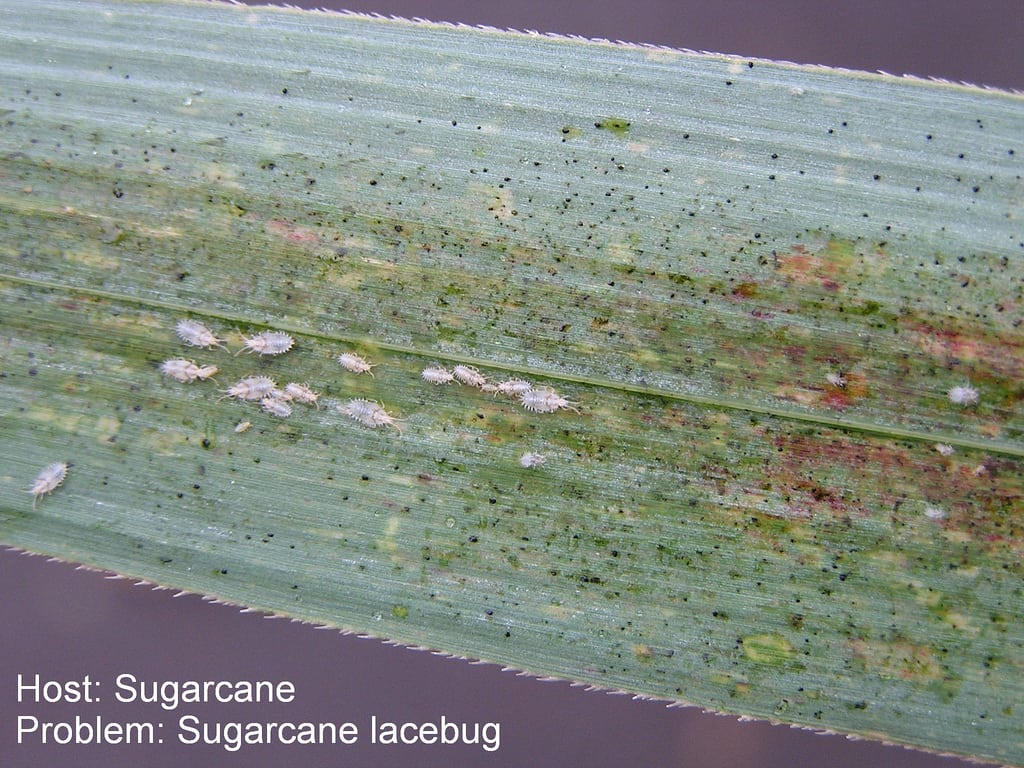Sugarcane Insect Control – How To Deal With Sugarcane Plant Pests


In Florida alone, sugarcane is a $2 billion/year industry. It is also grown commercially in United States in Hawaii, parts of Texas and California, and worldwide in many tropical to semi-tropical locations. Like any commercial crop, sugarcane does have its share of pests that can sometimes cause significant crop loss in sugarcane fields. And if you grow sugarcane plants in the home garden, they may affect yours too. Continue reading to learn about common pests of sugarcane.
Sugarcane Insect Control
How to deal with sugarcane plant pests depends largely on which one is affecting your crop. Below are some of the more common culprits you’ll come across when cultivating sugarcane.
Sugarcane grubs
Saccharum spp., commonly known as sugarcane, is a tropical, perennial grass that quickly self-propagates by underground stems. These underground stems, in particular, can fall victim to white grubs, also known as sugarcane grubs. These pests of sugarcane feed on the plant’s roots and underground stems. White grub infestations can be difficult to diagnose because they remain below the soil in their larval stage. However, plants may display yellowing foliage, stunted, or distorted growth. Sugarcane plants may also just suddenly fall over due to a lack of stems and roots to anchor them in place. Chemical controls of sugarcane grubs are ineffective. The best control methods for these pests are regular flooding or discing of sugarcane fields.
Sugarcane borers
Borers are one of the most destructive bugs that eat sugarcane, specifically the sugarcane borer Diatraea saccharalis. Sugarcane is this borer’s main host plant, but it can infest other tropical grasses as well. The sugarcane borers tunnel into the stalks where they spend their larval stage eating the soft, inner plant tissues. Sugarcane borer damage causes infected canes to produce 45% less sugar than non-infected plants. The open wounds these pests create by tunneling can also leave the plant susceptible to secondary pest or disease problems. The cornstalk borer may also cause sugarcane pest problems. Symptoms of borers in sugarcane include borer holes in stalks and foliage, chlorosis, as well as stunted or distorted growth. Insecticides containing neem oil, chlorantraniliprole, flubendiamide, or novaluron have proven to be effective sugarcane insect controls for borers.
Wireworms
Wireworms, the larvae of click beetles, can also cause crop loss in sugarcane fields. These small, yellow-orange worms feed on the roots and bud nodes of sugarcane plants. They can leave large holes in sugarcane plant tissues, and their mouthparts oftentimes introduce secondary bacterial or viral infections to the plant. Flooding sugarcane fields in late spring, then again in summer generally kills wireworms, but insecticides containing phorate are also effective.
Other Sugarcane Pests
In commercial sugarcane fields, some pest problems are expected and tolerated. Some other common but less damaging sugarcane plant pests are:
- Yellow sugarcane aphids
- Spider mites
- Root weevils
- Sugarcane lace bugs
- Island sugarcane leafhoppers
Insecticides, such as neem oil, or beneficial insects, such as ladybugs, are effective sugarcane pest control methods.
Sign up for the Gardening Know How newsletter today and receive a free copy of our e-book "How to Grow Delicious Tomatoes".
